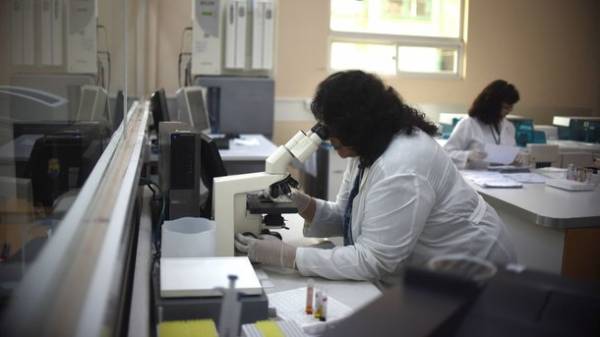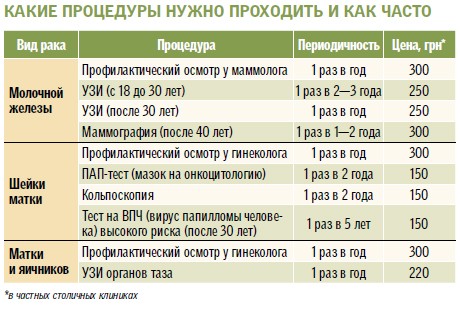
Cancer, according to the world health organization, took 2nd place in the world for reasons of human mortality, second only to diseases of the cardiovascular system. However, medicine has learned how to effectively fight cancer, provided that it is detected in the initial stages.
About the ways of early diagnostics of oncological diseases in women we talked to experts: obstetrician-gynecologist of the highest category, the medical center “Mother and Child”, candidate of medical Sciences, associate Professor Oksana Babenko and Director of the medical Center for diagnosis and treatment of cancer pathology Clinic Spizhenko, honored doctor of Ukraine Fedir Hrushevsky.
TO THE DOCTOR OUTSIDE THE PLAN
If you have:
- bloody discharge from the nipple;
- pain, feeling of heaviness in the breast;
- the convex formation in the breast;
- she became sharply asymmetrical or changed in size;
- acute or chronic pain in the ovary region;
- itching, burning, redness of genitals;
- bleeding outside the menstrual period;
- an unusual discharge;
- pain during sexual intercourse;
- irregular menstrual cycle.
THESE REGULAR EXAMINATIONS PROTECT AGAINST FEMALE CANCER
One of the main diagnostic procedures, regular check — up at the gynecologist. The doctor can assess the condition of the tissues of the female organs, to palpation, to take the necessary strokes. For example, a swab for Cytology of the vagina — laboratory microscopic examination of the cells of the cervix at various deflections. Moreover, cytological screening should be done on the background of complete health once a year women from 18 years of age or above — those who at a younger age started to be sexually active. This painless procedure: gynecologist takes the brush from the surface and inner part of the cervix smear, causing the resulting material to glass and sends it to the lab. If there comes a result with the pathological type of the stroke, then assign doobsledovanie. For example, a colposcopy (a method of examination of the cervix with additional lighting and magnification) and biopsy (pathological lesions with increasing diagnostic and treatment solutions have a certain form, and with these places pointed tweezers take the material for research). In severe dysplasia or cancer, the doctor may conduct a cervical curettage (scraping of the cervical canal). And only on the basis of these studies it is possible to make the diagnosis. Incidentally, in virtually every regional consultation is the Cabinet of cervical pathology, where a specially trained gynecologist, who can carry out these surveys, free of charge.

To detect cancer of the ovaries and uterus do ultrasound of the pelvic organs. It helps you understand the condition of the ovaries and uterus, eliminating the accumulation of fluid or malignant tumors. This procedure should take place at least once a year.
Gynecologist recommended to visit at least once a year but preferably every 6 months — so as not to miss the infection and precancerous lesions (e.g. cervical dysplasia).
FOR THE BREASTS. It can be assessed with ultrasound and mammography. Ultrasound — ultrasound method of detecting breast changes, mammogram — x-ray, so they are not interchangeable procedures. And mammography, and ultrasound give an idea about the status of breast tissue, but only an ultrasound will help to explore the surrounding lymph nodes. Mammography is invaluable in determining vnutriposelkovyh formations. For preventive purposes, a mammogram is not indicated for women under 40 years: it is believed that before this age ultrasound is more informative. This is due to the fact that the density of the breast in young women is high, and x-rays will not provide the desired information. Mammography is contraindicated in pregnant and nursing because, though minimal, but still radiation.







